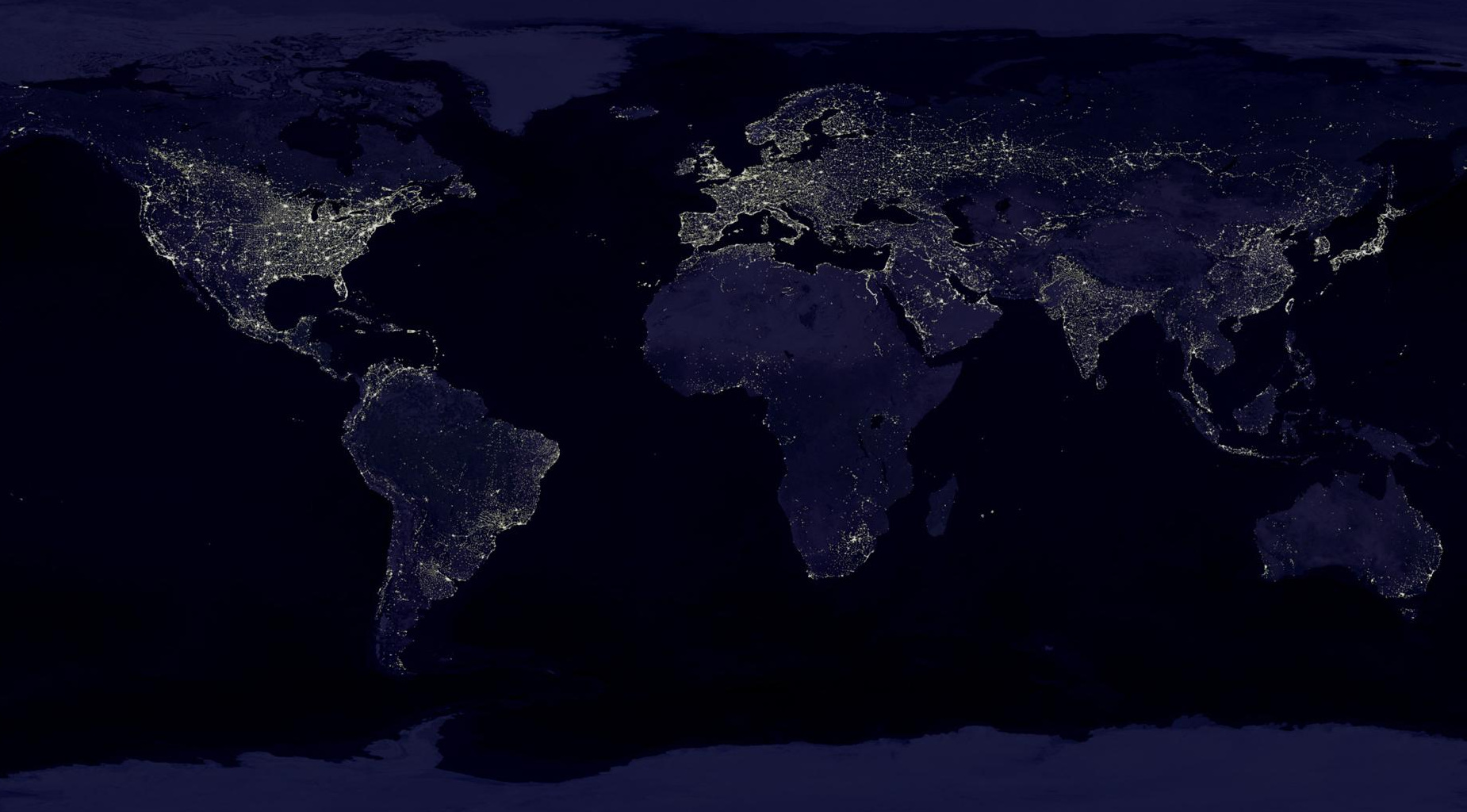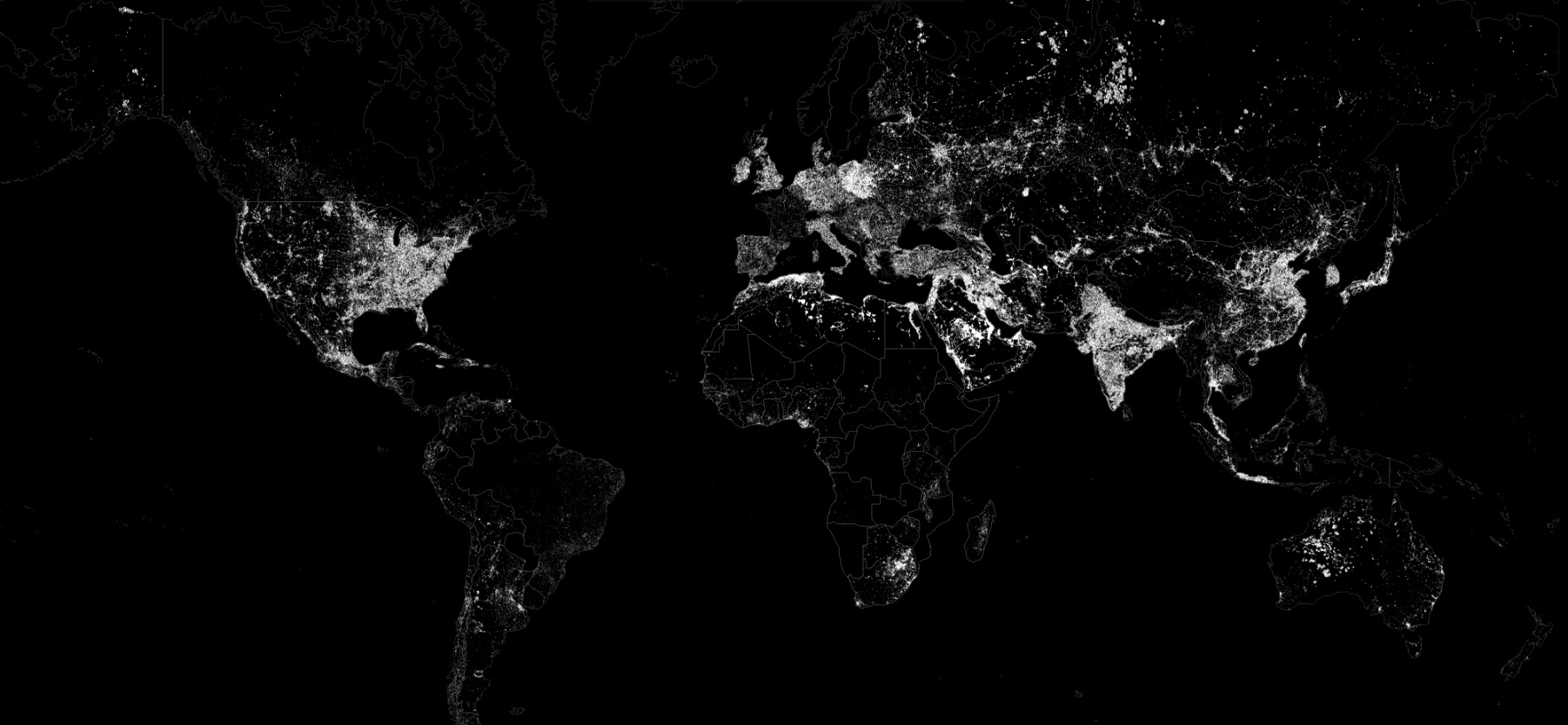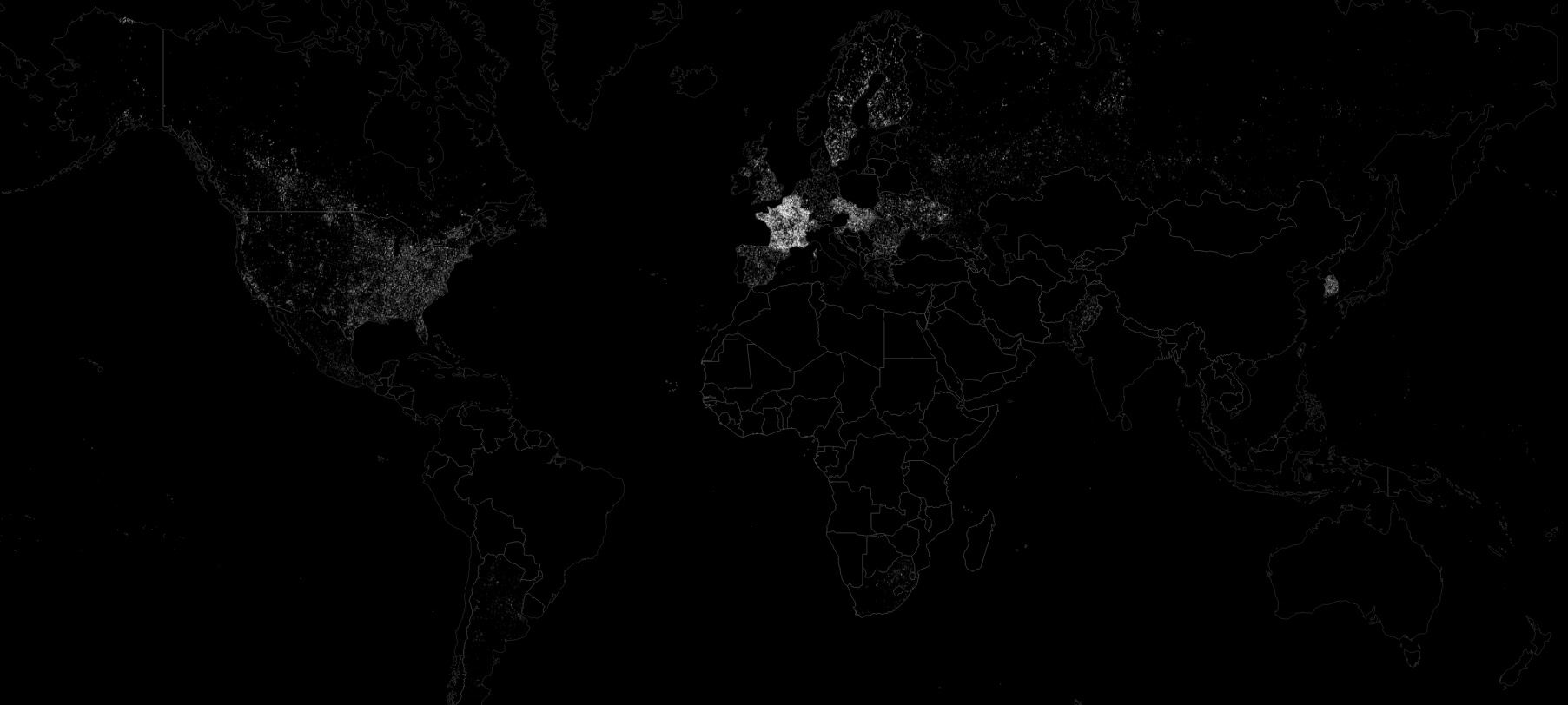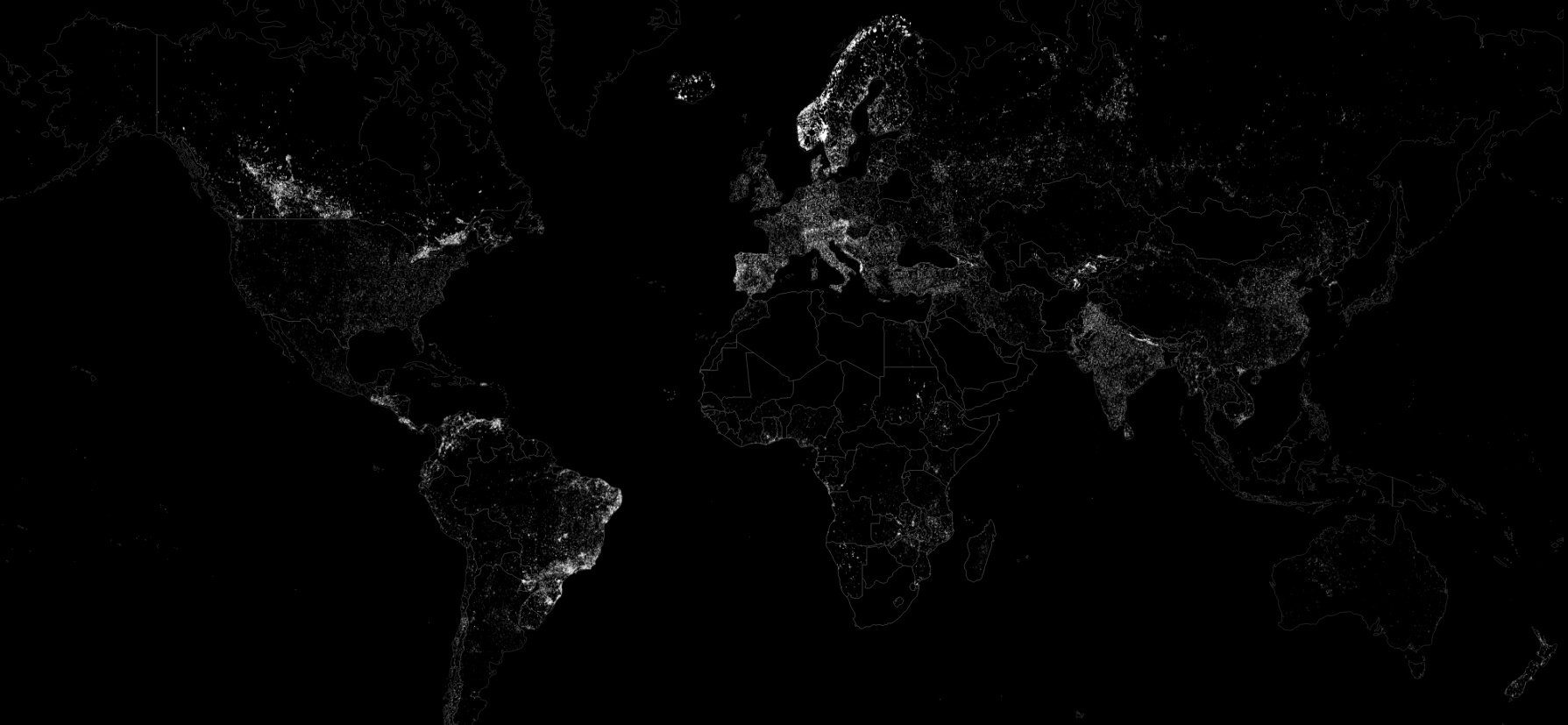Here’s one image based on this principle. It comes from NASA, and is a composite made from 400 separate satellite images from 2012:
How Are These Lights Powered?
But what if we could differentiate, by “shutting off” lights that are powered by certain electricity sources? Today’s visualizations come from a nifty interactive website put together by GoCompare.com, and they breakdown the world’s electricity by source: fossil fuels, renewables, or nuclear fission. Fossil Fuels To start, here are the places on Earth that are powered by fossil fuels. (Click image to see larger version) Globally, fossil fuels represent about two-thirds of electricity usage. It’s also worth noting that fossil fuels also make up the majority of non-electrical sources needed for things like automobiles, aircraft, and ships, which are not shown on the map. For further interest, we have previously shown the evolution over time of total U.S. energy usage, as well as a detailed breakdown of current U.S. usage – both which are still dominated by fossil fuels such as oil, natural gas, and coal. Nuclear Only Here are the places on Earth powered by nuclear fission. (Click image to see larger version) Nuclear makes up about 10% of all global electricity usage – and France is the world’s most reliant country, getting about 74% of its power mix from nuclear. Also noteworthy is Japan, which has switched its major electrical source from nuclear to fossil fuels since the Fukushima incident in 2011. Nuclear is a major source of energy in the rest of Europe as well. Belgium (51%), Sweden (43%), Hungary (51%), Slovakia (55%), Czech Republic (35%), Slovenia (33%), Ukraine (43%), and Finland (33%) all draw significant amounts of their electricity from nuclear reactors. Renewables Last, but not least, are renewables. (Click image to see larger version) It’s important to remember here that hydroelectricity is the largest renewable energy source by far, and that countries like Canada and Brazil rely on hydro extensively. Outside of hydro, Italy is a leader in solar generation (6% of all electricity). Meanwhile, just eight countries host over 80% of all installed wind power: France, Canada, United Kingdom, Spain, India, Germany, USA, and China. Finally, it’s worth noting that there are four smaller countries that get all, or nearly all, of their electricity from renewable sources. Those include Iceland (72% hydro, 28% geothermal), Albania (100% hydro), Paraguay (100% hydro), and Norway (97% hydro, 2% fossil fuels, and 1% other).
on
#1: High Reliability
Nuclear power plants run 24/7 and are the most reliable source of sustainable energy. Nuclear electricity generation remains steady around the clock throughout the day, week, and year. Meanwhile, daily solar generation peaks in the afternoon when electricity demand is usually lower, and wind generation depends on wind speeds.As the use of variable solar and wind power increases globally, nuclear offers a stable and reliable backbone for a clean electricity grid.
#2: Clean Electricity
Nuclear reactors use fission to generate electricity without any greenhouse gas (GHG) emissions.Consequently, nuclear power is the cleanest energy source on a lifecycle basis, measured in CO2-equivalent emissions per gigawatt-hour (GWh) of electricity produced by a power plant over its lifetime. The lifecycle emissions from a typical nuclear power plant are 273 times lower than coal and 163 times lower than natural gas. Furthermore, nuclear is relatively less resource-intensive, allowing for lower supply chain emissions than wind and solar plants.
#3: Stable Affordability
Although nuclear plants can be expensive to build, they are cost-competitive in the long run. Most nuclear plants have an initial lifetime of around 40 years, after which they can continue operating with approved lifetime extensions. Nuclear plants with lifetime extensions are the cheapest sources of electricity in the United States, and 88 of the country’s 92 reactors have received approvals for 20-year extensions. Additionally, according to the World Nuclear Association, nuclear plants are relatively less susceptible to fuel price volatility than natural gas plants, allowing for stable costs of electricity generation.
#4: Energy Efficiency
Nuclear’s high energy return on investment (EROI) exemplifies its exceptional efficiency. EROI measures how many units of energy are returned for every unit invested in building and running a power plant, over its lifetime. According to a 2018 study by Weissbach et al., nuclear’s EROI is 75 units, making it the most efficient energy source by some distance, with hydropower ranking second at 35 units.
#5: Sustainable Innovation
New, advanced reactor designs are bypassing many of the difficulties faced by traditional nuclear plants, making nuclear power more accessible.
Small Modular Reactors (SMRs) are much smaller than conventional reactors and are modular—meaning that their components can be transported and assembled in different locations. Microreactors are smaller than SMRs and are designed to provide electricity in remote and small market areas. They can also serve as backup power sources during emergencies.
These reactor designs offer several advantages, including lower initial capital costs, portability, and increased scalability.
A Nuclear-Powered Future
Nuclear power is making a remarkable comeback as countries work to achieve climate goals and ultimately, a state of energy utopia. Besides the 423 reactors in operation worldwide, another 56 reactors are under construction, and at least 69 more are planned for construction. Some nations, like Japan, have also reversed their attitudes toward nuclear power, embracing it as a clean and reliable energy source for the future. CanAlaska is a leading exploration company in the Athabasca Basin, the Earth’s richest uranium depository. Click here to learn more now. In part 3 of the Road to Energy Utopia series, we explore the unique properties of uranium, the fuel that powers nuclear reactors.

































